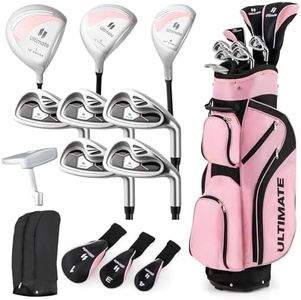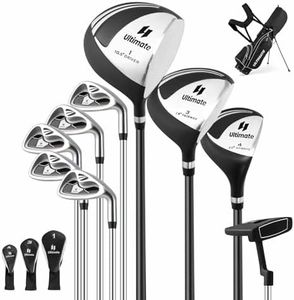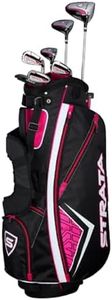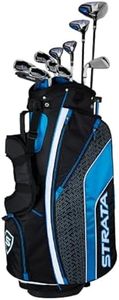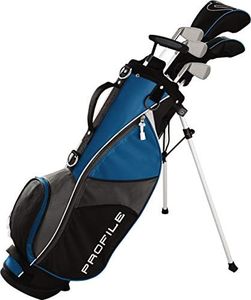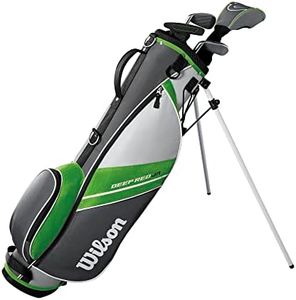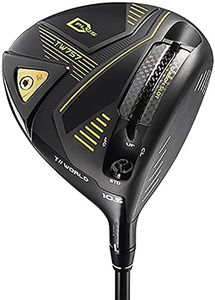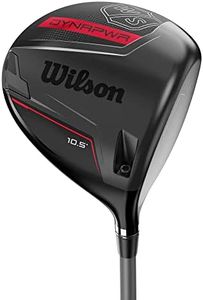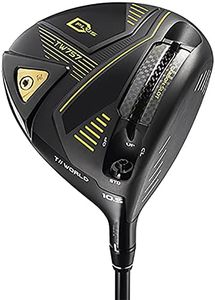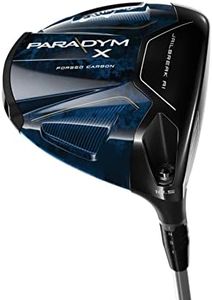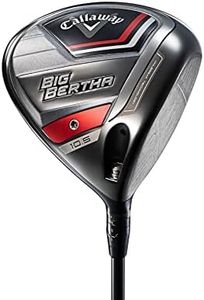We Use CookiesWe use cookies to enhance the security, performance,
functionality and for analytical and promotional activities. By continuing to browse this site you
are agreeing to our privacy policy
10 Best Drivers Golf Clubs
From leading brands and best sellers available on the web.Buying Guide for the Best Drivers Golf Clubs
Choosing the right driver for golf is a big step in improving your game. The driver is designed to hit the ball as far as possible from the tee, and with so many options available, it's important to understand which key features make a difference. Your choice should take into account your skill level, swing speed, and what kind of ball flight you want to achieve. Knowing the meaning and impact of each spec will help you pick a driver that feels comfortable, maximizes your strengths, and helps you enjoy the game more.LoftLoft refers to the angle of the clubface relative to the ground and plays a big role in how high and far the ball travels. Drivers commonly have lofts ranging from 8 to 12 degrees. Lower lofts (8-10°) tend to produce lower, longer shots and are often preferred by players with fast swing speeds. Higher lofts (10-12°) help get the ball airborne easily and are better suited for beginners or those with slower swing speeds. Choose a loft that helps you consistently launch the ball high enough while keeping it under control based on your unique swing style.
Shaft FlexShaft flex indicates how much the shaft bends during your swing. Common flexes include Extra Stiff, Stiff, Regular, Senior, and Ladies. A stiffer shaft is better for those with fast swing speeds as it provides more control, while a more flexible shaft helps players with slower swings generate more distance. If your drives tend to slice or fade, a softer flex may help. Try to match your shaft flex to your swing speed for optimal performance and comfort.
Head Size (Volume)The head size of a driver is usually measured in cubic centimeters (cc), with the maximum allowed size being 460cc. Larger heads generally offer a bigger sweet spot and are more forgiving on off-center hits, making them a good choice for beginners or those looking for extra confidence at address. Smaller head sizes provide more workability for shaping shots and may appeal to advanced players. Consider your consistency and confidence when deciding on head size; if you need more forgiveness, go for the larger head.
AdjustabilityMany modern drivers offer features that let you adjust the loft, lie, and even the weight distribution within the club head. This adjustability gives you the ability to fine-tune the driver to your swing and course conditions. If you like to experiment with your setup or want a driver that can grow with your game, adjustability is valuable. However, if you prefer simplicity, a fixed driver may better suit you.
Weight DistributionWeight distribution, or 'center of gravity,' refers to where the bulk of the club's mass is located. Some drivers have weight positioned low and back to help launch the ball higher and with more forgiveness, while others have adjustable or forward weight for lower-spin, penetrating shots. If you struggle to get the ball in the air, look for drivers with weight low and back. If you want to reduce spin for extra distance, a driver with more forward weighting may help.
LengthDriver length typically ranges from about 43 to 46 inches. Longer drivers may allow for more clubhead speed and distance, but can be harder to control. Shorter drivers offer better control and accuracy, which might be more beneficial for many golfers. Choose a length that lets you make solid contact comfortably and consistently; it's better to be accurate and consistent than to simply chase distance.
